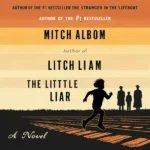Introduction
Freida McFadden’s novel “The Housemaid PDF” is a gripping tale that plunges readers into a world of mystery, deception, and suspense. This novel has captivated audiences with its intricate plot and well-developed characters. Let’s dive into the intricate layers of this fascinating book and explore what makes it a must-read.
| Name of PDF | The Housemaid PDF |
|---|---|
| No Pages | |
| Author | Freida McFadden’s |
| Originally Published | April 26, 2022 |
| Language | English |
| Genres | Historical Fiction, Thriller, Psychological thriller, Suspense, Mystery, Psychological Fiction, Domestic Fiction |
| Size | 1.66 MB |
| Chek, latest edition |
The Keeper of Happy Endings PDF
Table of Contents
About the Author
Freida McFadden’s Background
Freida McFadden is a prolific author known for her psychological thrillers and suspenseful storytelling. With a background in medicine, McFadden brings a unique perspective to her writing, blending her knowledge of human behavior with her flair for crafting compelling narratives.
Other Works by Freida McFadden
Some of McFadden’s other notable works include “The Perfect Son” and “Want to Know a Secret?”. Each of her novels is known for its tight plotting, unexpected twists, and deep psychological insights.
Plot Summary
Basic Plot Outline
“The Housemaid” follows the story of a young woman named Millie who takes up a job as a housemaid in the home of the enigmatic and wealthy Winthrop family. As she navigates her new role, she begins to uncover secrets that could jeopardize her safety and sanity.
Key Events in the Story
Key events include Millie’s discovery of a hidden diary, mysterious occurrences in the mansion, and her growing suspicions about the true nature of her employers. These events build up to a climax that is as shocking as it is satisfying.
Main Characters
Introduction to the Protagonist
Millie, the protagonist, is a determined and resourceful woman trying to rebuild her life. Her journey is the heart of the novel, and her character development is both realistic and compelling.
Supporting Characters
Supporting characters include the members of the Winthrop family: Mrs. Winthrop, a seemingly perfect but deeply troubled matriarch; Mr. Winthrop, whose charm masks darker tendencies; and their children, who each play crucial roles in the unfolding drama.
Antagonists
The antagonists in the story are not always immediately apparent, with various characters showing dual facets to their personalities, creating a sense of unpredictability and tension throughout the novel.
Themes Explored
Class and Social Status
The novel delves into the dynamics of class and social status, exploring how these elements shape interactions and power dynamics within the Winthrop household.
Trust and Betrayal
Trust and betrayal are central themes, with characters constantly navigating who they can trust and facing the repercussions of misplaced trust.
Isolation and Loneliness
Isolation and loneliness are also significant themes, highlighted by Millie’s solitary role in the mansion and the emotional isolation experienced by the Winthrop family members.
Setting
Description of the Main Setting
The primary setting is the opulent, yet eerie Winthrop mansion. Its grandeur is contrasted by an underlying sense of foreboding, adding to the novel’s suspenseful atmosphere.
How the Setting Influences the Plot
The mansion itself becomes a character in the story, with its hidden rooms, creaky floors, and dark corners playing crucial roles in the unfolding mystery.
Writing Style
Narrative Technique
McFadden employs a first-person narrative from Millie’s perspective, allowing readers to closely follow her thoughts and experiences. This perspective enhances the suspense, as readers uncover clues and face dangers alongside Millie.
Use of Language and Imagery
The use of descriptive language and vivid imagery helps to create a palpable sense of tension and unease, drawing readers deeper into the story’s world.
Critical Reception
Reviews and Opinions
“The Housemaid” has received positive reviews for its engaging plot, well-drawn characters, and surprising twists. Critics have praised McFadden’s ability to keep readers on the edge of their seats.
Awards and Recognitions
While specific awards for “The Housemaid” may be limited, McFadden’s reputation as a talented writer in the thriller genre continues to grow with each new release.
Analysis of Key Scenes
Important Plot Twists
The novel is packed with twists that challenge readers’ assumptions and keep the narrative fresh and unpredictable. Each twist is meticulously crafted to enhance the overall suspense.
Character Development Moments
Key moments of character development occur as Millie uncovers more about her employers and herself, leading to significant personal growth and revelation.
Symbolism and Metaphors
Significant Symbols in the Novel
Symbols such as the hidden diary and the mansion itself are rich with meaning, representing the secrets and facades that characters maintain.
Metaphorical Elements
Metaphors are woven throughout the novel, enhancing themes of entrapment and deception. The mansion, for instance, serves as a metaphor for the characters’ hidden lives and buried secrets.
Reader’s Experience
Emotional Impact on Readers
Readers often find themselves emotionally invested in Millie’s journey, experiencing a range of emotions from fear to empathy. The novel’s ability to evoke such responses is a testament to McFadden’s skillful writing.
Relatability and Engagement
Despite its suspenseful nature, “The Housemaid” remains relatable through its exploration of universal themes such as trust and the search for truth, ensuring a high level of reader engagement.
Comparisons with Other Works
Similar Novels in the Genre
Fans of psychological thrillers like “The Girl on the Train” by Paula Hawkins or “Gone Girl” by Gillian Flynn will find “The Housemaid” to be a similarly gripping read.
How It Stands Out
What sets “The Housemaid” apart is its unique blend of psychological insight and gothic elements, creating a distinctive atmosphere that lingers long after the final page.
Discussion Points
Questions Raised by the Novel
The novel raises questions about the nature of truth, the impact of secrets, and the complexities of human relationships. Readers are left pondering the ethical implications of the characters’ actions.
Ethical Dilemmas and Moral Questions
The moral questions posed by the novel, such as the justifications for deception and the boundaries of loyalty, provide rich material for discussion and reflection.
Adaptations and Future Prospects
Potential for Film/TV Adaptation
Given its suspenseful plot and richly drawn characters, “The Housemaid” is ripe for adaptation into film or television, offering ample material for a gripping visual narrative.
Sequel or Spin-Off Possibilities
There is also potential for sequels or spin-offs, as the novel’s rich world and complex characters leave many avenues unexplored.
Conclusion
In conclusion, “The Housemaid” by Freida McFadden is a masterfully crafted psychological thriller that keeps readers hooked from start to finish. Its intricate plot, well-developed characters, and thought-provoking themes make it a standout in the genre. Whether you’re a longtime fan of thrillers or new to the genre, this novel is well worth your time.
FAQs about The Housemaid PDF
What is the main theme of “The Housemaid”?
The main themes include trust and betrayal, class and social status, and isolation.
Who are the main characters in the novel?
The main characters include Millie, the protagonist, and the members of the Winthrop family.
Is “The Housemaid” part of a series?
No, “The Housemaid” is a standalone novel, but it leaves room for potential sequels.
What genre does “The Housemaid” belong to?
“The Housemaid” is a psychological thriller with elements of gothic fiction.
Has “The Housemaid” been adapted into a film or TV series?
As of now, there are no official adaptations, but the novel has strong potential for future film or TV adaptations.




